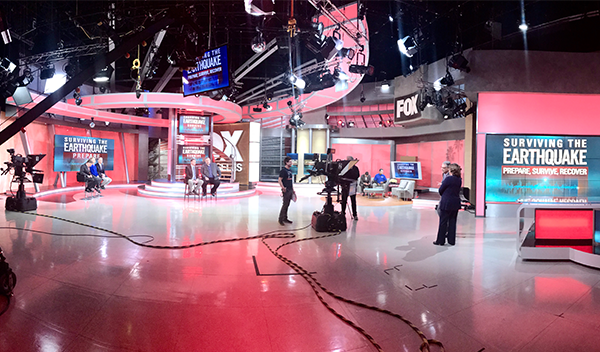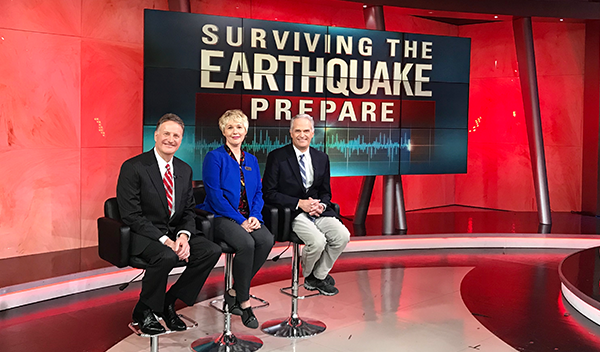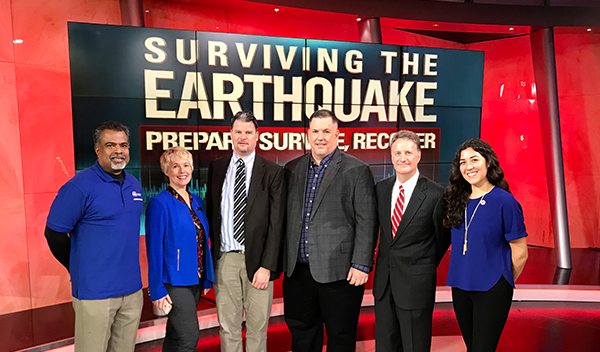In April CEA, along with other earthquake experts, was part of FOX 11’s television special, “Surviving the Earthquake.” It was clearly stated during the show that Californians should start having conversations about the possibility of seismic activity striking at any moment and making sure we are prepared to survive and recover from California’s next damaging quake. As seismologist Dr. Lucy Jones, a special guest on the show, emphasized: “the earthquake is inevitable…but the disaster is not.”
The 30-minute special, which aired on two different local Fox channels in the Los Angeles area on April 14, was focused on the recently-launched webpage created by CEA in collaboration with eight other partners, which include the United States Geological Survey (USGS), Federal Emergency Management Agency (FEMA), U.S. Small Business Administration (SBA), Office of Emergency Services (CalOES), California Geological Survey (CGS), Earthquake Brace and Bolt (EBB), American Red Cross, and the Earthquake Country Alliance (ECA) managed by the Southern California Earthquake Center at USC. The webpage serves as a central hub for reliable earthquake preparedness information, all year long.
Representatives from seven of the nine organizations listed above took part in the television special, which helped educate the community about what to do before, during, and after an earthquake. Host Hal Eisner provided a recap of some of the most damaging earthquakes in California, including the 1906 San Francisco and the 1989 Loma Prieta quake, as well as the 1994 Northridge and 1987 Whittier Narrows earthquakes in Southern California. He then took viewers through the three different stages of earthquake preparedness:
Prepare
In this segment CEA, EBB and USGS educated viewers about the importance of acquiring a separate earthquake insurance policy according to their needs and budget, how to seismically retrofit their older houses to help prevent structural damage or collapse, and to make sure residents know about their local seismic risk, respectively.
Survive
Continuing the conversation onto the topic of surviving an earthquake, Hal Eisner, with representatives from CalOES and ECA, discussed measures to take and items needed to be able to survive strong seismic activity, such as building a preparedness kit and knowing how to Drop, Cover, and Hold On when the earth shakes.
Recover
In the last segment, members of the American Red Cross and SBA offered tips in case homes or property had sustained damage, including where families can seek shelter and property owners can apply for low-interest rate disaster loans.
Although this show aired primarily in the Los Angeles area, the message is relevant to all Californians. The “Surviving the Earthquake” special is available online for people to learn in detail the tips shared by each earthquake expert. This production also prompted the opportunity to participate in an additional program, Eisner’s podcast show “What the Hal.” Via this podcast, CEA and the rest of the earthquake experts were successfully able to reach additional audiences and educate listeners on the subject of earthquake insurance, seismic retrofitting, and what to do when an earthquake hits.
For the participating partners, this type of informational programming is another resource in the effort to educate Californians that our state is earthquake country, that the risk is real and the next big one could happen today.



